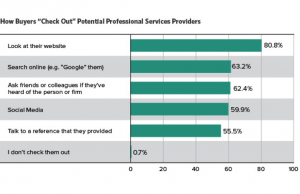
Business and talent acquisition leaders are increasingly using flexible work options to attract the best and brightest talent. Over one-third of business leaders (34 percent) expect 50 percent of their full-time staff will be working virtually by the year 2020.
The massive growth of virtual employees will have an overwhelmingly positive impact on workplace morale, productivity and overhead costs. But to successfully build and lead remote teams, businesses need to ensure they have the right virtual leadership in place.
In the traditional workplace, teams and their managers are staffed on-site, which gives them face time to collaborate, work together and deliver feedback. When teams are geographically dispersed, like in most modern workplaces today, virtual leaders are presented with a unique set of challenges, including:
- Supervising employees in different locations and time zones
- Building trust and open lines of communication
- Establishing routines
- Helping remote workers feel part of a team
While some of these challenges may seem typical to any work environment, they can be particularly difficult for virtual teams that do not have the usual face time and physical workspace. But with the right skills and training, virtual leaders can successfully build and manage highly productive remote teams.
Here are some of the most important leadership competencies virtual leaders need to master in order to be as equally effective as in-person managers.
Encouraging and Boosting Collaboration
When teams and their leaders both work on-site, they may be naturally inclined to collaborate more often because they are seated together and get more face time. Every leader needs to be able to inspire employees to work together through effective communication, goal setting and clear roles and responsibilities. For virtual leaders, however, boosting collaboration in the workplace requires deeper skills in communication and team alignment.
Virtual leaders need to ensure they understand the most effective ways to communicate with their remote team members. For example, utilizing communication and collaboration technology, such as file sharing services, video conferencing and chat, can help make communication consistent and productive.
Developing Trust with Remote Workers
When team members trust their managers and their peers, they are more likely to enjoy their jobs, be engaged in their work and be more productive. Leaders can develop trust with their teams by focusing on building credibility, reliability and having a low self-orientation. These characteristics are even more important for virtual leaders trying to build trust with remote workers.
Getting to know remote team members requires more initiative and consistency from virtual managers. This includes regular one-to-one meetings to discuss projects, feedback and general support. Virtual leaders can also earn team members’ trust by being transparent about goals, results and feedback. These insights can help keep staff feeling engaged and “in the know” about key business initiatives.
Holding Team Members Accountable for Their Work
When team members work remotely, they automatically have more autonomy. This leads to greater job satisfaction, as well as many other positive outcomes. But oftentimes it can be difficult for virtual leaders to balance autonomy with accountability. Many leaders run the risk of giving employees too much autonomy, which can lead to disorganization and ambiguity about how virtual team members are working.
To hold remote team members accountable, virtual leaders need to ensure they know how to properly set expectations with their staff.
The acronym ATC offers a helpful reminder of the steps virtual leaders need to take to manage accountability. ATC stands for action, timetable and checkpoints.
Here’s a closer look at each of these elements:
- Action. Clarify expectations and identify who is accountable for which parts of the work.
- Timetable. Establish an agreed upon due date and put it in writing.
- Checkpoints. Establish key milestones to check in, review progress and provide feedback.
Using the ATC model can greatly enhance accountability in others. By having direct conversations about accountability, virtual managers can clarify what is expected on a daily, weekly or monthly basis and how success will be measured. Additionally, it’s important to set expectations around when and how team members should keep managers informed, either via email or weekly check-in meetings.
Business & Finance Articles on Business 2 Community
(55)







